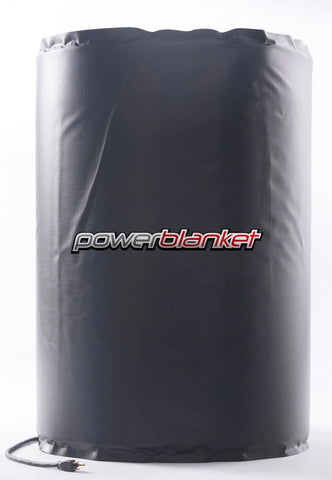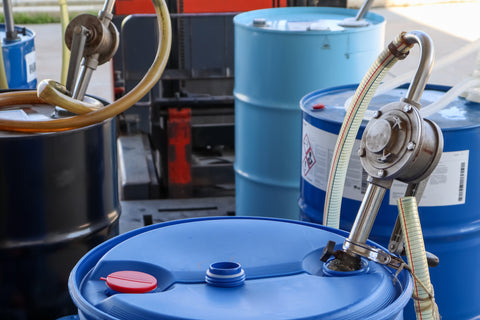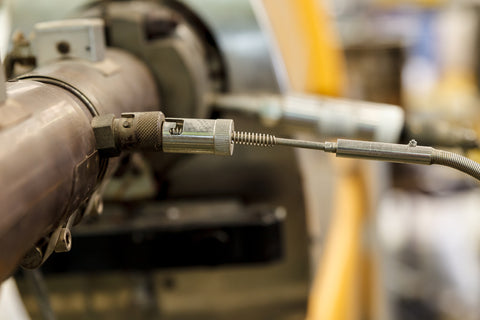Unlocking the Secrets of Efficient Honey Bottling
Beekeepers and honey enthusiasts know that handling bulk honey can be a sticky situation, especially when it comes to bottling honey from a 55-gallon barrel or drum. Whether you're a commercial beekeeper or a hobbyist with a bountiful harvest, mastering the art of transferring liquid honey from large containers to smaller bottles is crucial for efficient honey storage and distribution. This article will answer the question, "How to bottle honey from a 55-gallon barrel."
The Buzz About Your Barrel: Sizing Up Your Sweet Stockpile
 Before diving into the bottling process, it's important to understand what you're dealing with. A 55-gallon drum of honey is no small feat to handle, and knowing its characteristics will help you prepare adequately.
Before diving into the bottling process, it's important to understand what you're dealing with. A 55-gallon drum of honey is no small feat to handle, and knowing its characteristics will help you prepare adequately.How heavy is a barrel of honey?
A full 55-gallon barrel of honey weighs approximately 650-700 pounds. This substantial weight means you'll need to consider safety and proper equipment when moving or handling the drum to protect the honey inside. The exact weight can vary slightly depending on the honey's moisture content and density.
How many pounds of honey are in a 55-gallon drum?
Typically, a 55-gallon drum contains about 605-630 pounds of honey. This volume of honey represents a significant investment of time and resources, both from the bees that produced it and the beekeeper who harvested it. Understanding the sheer quantity you're working with underscores the importance of efficient bottling techniques to minimize waste and maintain quality.
Preparing for the Bottling Process
Proper preparation is key to a smooth bottling experience. Let's look at the essential equipment and safety precautions you'll need to consider.
Essential Equipment

To bottle honey from a 55-gallon barrel, you'll need:
-
A heater for 55-gallon drums
-
A honey pump or gravity feed system
-
Filters (if necessary)
-
Bottling tanks
-
Various sized bottles
-
Labels
-
Personal protective equipment (gloves, apron)
-
A hand truck or barrel truck for moving the drum
55-Gallon drum heaters are a game-changer for maintaining the optimal temperature of your honey. It ensures that the honey remains at the perfect viscosity for pumping and bottling, preventing crystallization and making the entire process more efficient.
Safety Precautions
Safety should always be your top priority when handling large quantities of honey. Here are some key points to remember:
-
Use proper lifting techniques or mechanical aids like a hand truck when moving the barrel.
-
Wear appropriate personal protective equipment, including gloves and non-slip shoes.
-
Ensure your honey house or bottling area has a clean, dry concrete floor to prevent slips.
-
Sanitize all equipment thoroughly before use to maintain food safety standards.
The Bottling Process: Step-by-Step Guide
Now that we're prepared, let's dive into the bottling process itself.
1. Preparing the Barrel
Start by cleaning the exterior of the drum and the area where you'll be working. If your barrel has been in storage, inspect it for any signs of damage or contamination. Position the barrel in your workspace, ideally elevated on a sturdy platform for easier access to the honey gate.
2. Heating the Honey
Attach your heating element to bring the honey to the optimal temperature for bottling, usually around 95°F (35°C). This step is crucial, especially if your honey has started to crystallize or if you're working in a cool environment. Getting the honey heated to the right temperature ensures that the honey flows smoothly, making the bottling process much easier.
3. How to get honey out of a drum?
There are two primary methods for extracting honey from a drum:
-
Gravity feed system: This method relies on gravity to move the honey from the barrel to your bottling tank. It's simple but can be slow, especially with very viscous honey.
-
Pump systems: A honey pump can significantly speed up the process. When using a pump, ensure it's food-grade and designed for honey to avoid damaging the honey's delicate structure.
Both methods have their pros and cons. Gravity systems are gentler on the honey but slower, while pumps are faster but may incorporate more air into the honey.
4. Filtering the Honey (if necessary)
Depending on your preferences and the initial processing of the honey, you may choose to filter it as you transfer it from the barrel to your bottling tank. Use food-grade filters appropriate for the level of filtration you desire. Some beekeepers prefer to keep their honey raw and unfiltered, while others opt for a clearer product.
5. What is the best way to bottle honey?
When it comes to bottling, consider these tips:
-
Choose bottles that complement your honey's qualities and meet your market's preferences.
-
Fill bottles slowly to minimize air bubbles, which can affect the honey's appearance and shelf life.
-
Leave a small amount of headspace in each bottle to allow for expansion.
-
Seal bottles immediately after filling to prevent contamination.
6. Labeling and Storage
Proper labeling is not just about marketing; it's also a legal requirement in many places. Ensure your labels include:
-
The type of honey
-
Net weight
-
Your contact information
-
Any required regulatory information
Store bottled honey in a cool, dry place away from direct sunlight to maintain its quality. Properly stored, honey can last for an extended period without significant degradation.
Troubleshooting Common Issues
Even with the best preparation, you may encounter some challenges. Here's how to address them:
Dealing with Crystallization
If your honey has crystallized in the barrel, don't panic. Use your barrel heater to slowly warm the honey, being careful not to overheat it, which can damage its natural properties. Patience is key – it might take about a week to fully liquefy a crystallized 55-gallon drum.
Preventing Contamination
Maintain strict hygiene practices throughout the bottling process. Clean and sanitize all equipment before use, and ensure your honey house or bottling area is free from potential contaminants. Regularly inspect your setup for any signs of contamination and address issues immediately.
Maximizing Efficiency in Large-Scale Bottling
For those handling large quantities of honey, efficiency is crucial. Here are some tips to streamline your process:
Time-Saving Tips
-
Organize your workspace for optimal flow from barrel to bottle.
-
Consider investing in multiple barrel heaters if you're processing several drums at once.
-
Use a bottling tank with a honey gate for controlled filling of individual bottles.
Quality Control Measures
Implement a quality control system to ensure consistency across all your bottled honey. This might include:
-
Regular sampling and testing of honey from each barrel
-
Monitoring temperature throughout the process
-
Checking filled bottles for proper weight and appearance

From Barrel to Bottle: Embracing Your Honey Bottling Journey
Bottling honey from a 55-gallon barrel may seem daunting at first, but with the right equipment, preparation, and techniques, it can be a smooth and rewarding process. By maintaining proper temperature control with tools like drum heaters, using appropriate extraction methods, and following food safety guidelines, you can efficiently transfer your liquid gold from bulk storage to retail-ready bottles.
Remember, each step of the process, from moving the heavy drums to the final drop of honey in the bottle, contributes to the quality of your product. Take your time, focus on cleanliness and temperature control, and soon you'll be a master at handling bulk honey.
Whether you're bottling for your own use or preparing honey for sale, these techniques will help ensure that the hard work of your bees is honored in every golden jar. Happy bottling!
If you are looking for temperature control for smaller containers of honey, like a 5-gallon bucket, take a look at our 5-gallon BeeBlanket honey heaters.








